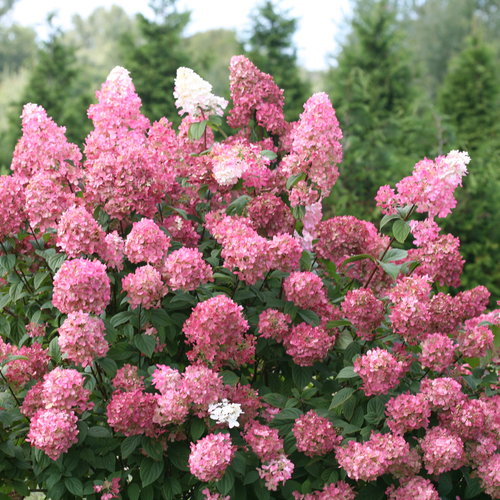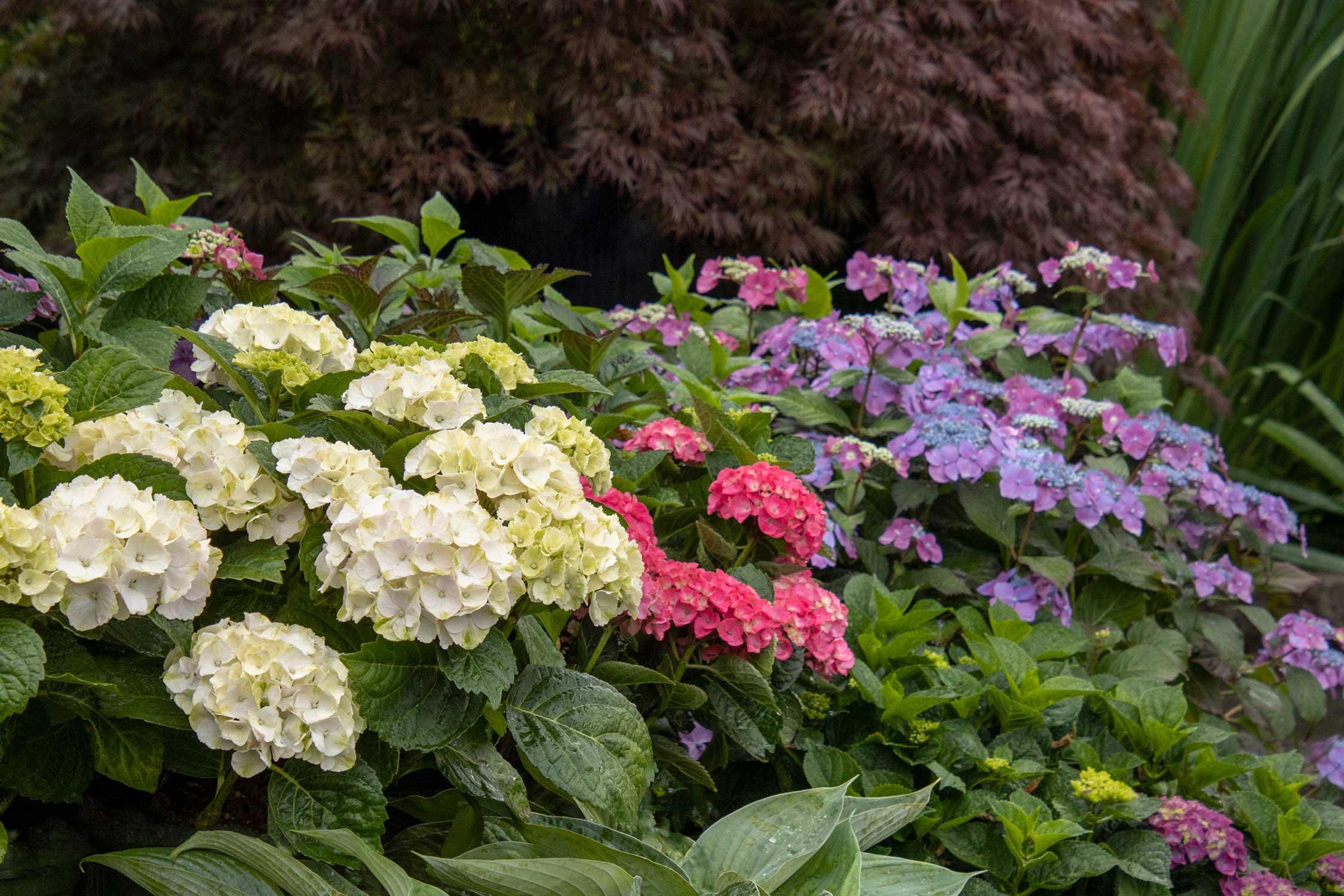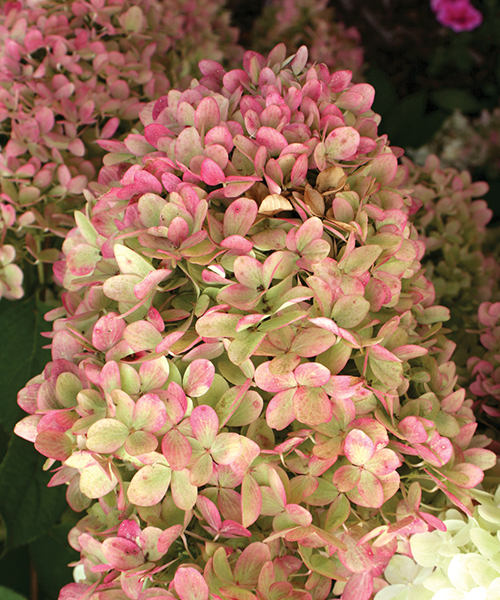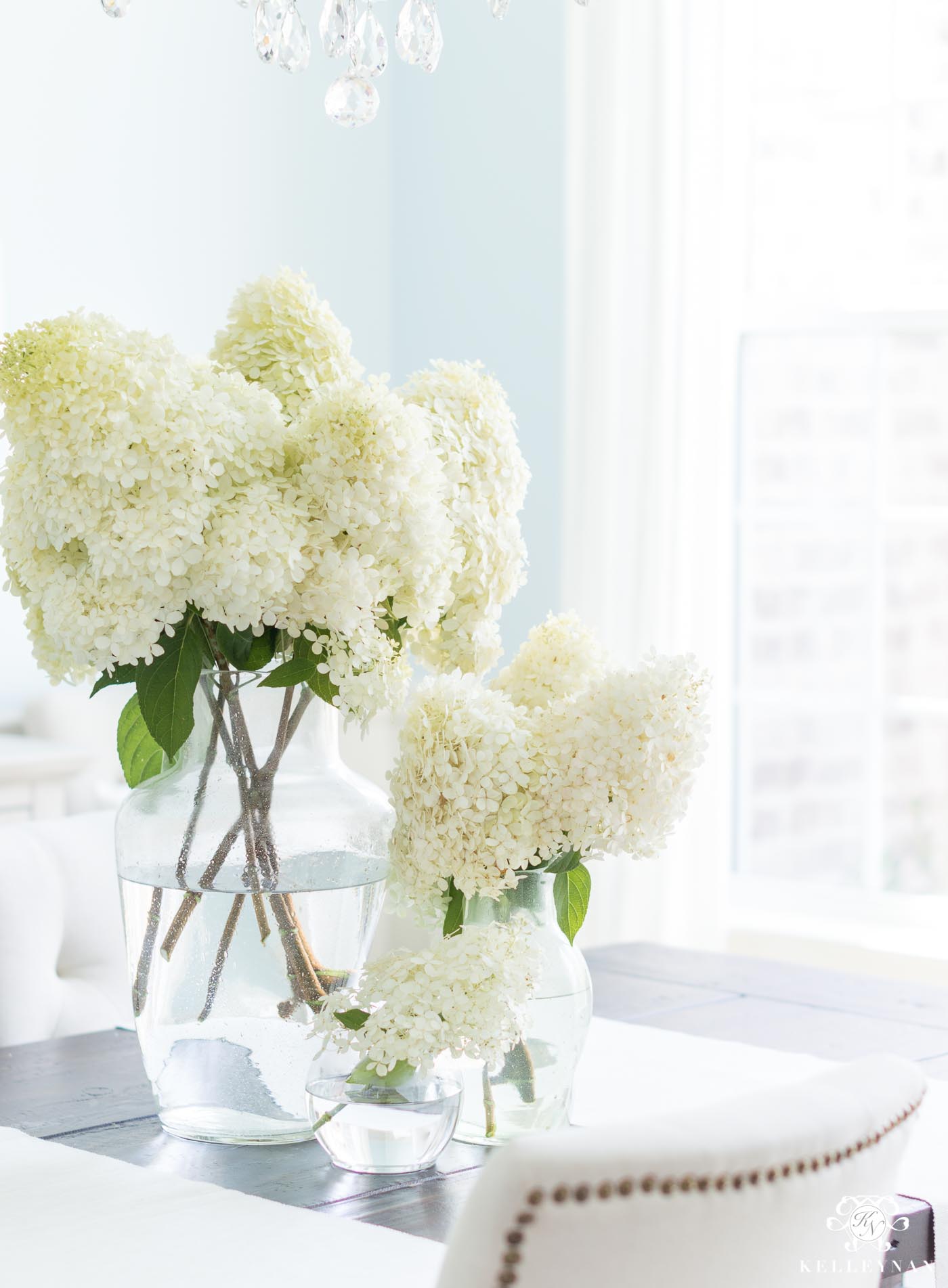Cone Hydrangeas: The Showstopping Shrub That's
Cone Hydrangeas: The Showstopping Shrub That's Easy to Grow
Cone hydrangeas (Hydrangea paniculata) are a type of hydrangea that is known for its large, cone-shaped flower clusters. They are a popular choice for gardens because they are easy to grow and care for, and they can be grown in a variety of climates.
Cone hydrangeas are native to Asia, and they are hardy in USDA zones 3-8. They can grow to be 6-8 feet tall and wide, and they typically bloom in late summer or early fall. The flowers can be white, pink, or blue, depending on the variety.
Cone hydrangeas are relatively easy to care for. They prefer full sun or partial shade, and they need well-drained soil. They should be watered regularly, especially during the summer months. Cone hydrangeas are also susceptible to powdery mildew, so it is important to keep them well-ventilated.
Cone hydrangeas are a versatile plant that can be used in a variety of ways in the garden. They can be planted as a specimen shrub, or they can be used to create a hedge or screen. They are also a popular choice for cut flowers.
Here are some of the benefits of planting cone hydrangeas in your garden:
- They are easy to grow and care for.
- They can be grown in a variety of climates.
- They have large, showy flowers.
- They can be used in a variety of ways in the garden.
If you are looking for a beautiful and easy-to-grow shrub for your garden, then cone hydrangeas are a great option.
Main Content
Choosing the Right Variety
There are many different varieties of cone hydrangeas available, so it is important to choose the right one for your garden. Some factors to consider when choosing a variety include:
- The size of the plant. Cone hydrangeas can range in size from 3-8 feet tall, so it is important to choose a variety that will fit in your space.
- The color of the flowers. Cone hydrangeas can be white, pink, or blue. Choose a variety that will complement the other plants in your garden.
- The bloom time. Cone hydrangeas typically bloom in late summer or early fall. Choose a variety that will bloom during the time of year that you want it to.
Planting Cone Hydrangeas
Cone hydrangeas can be planted in the spring or fall. When planting, choose a location that gets full sun or partial shade. The soil should be well-drained.
To plant a cone hydrangea, dig a hole that is twice as wide and as deep as the root ball. Backfill the hole with soil, and water the plant well.
Caring for Cone Hydrangeas
Cone hydrangeas are relatively easy to care for. They need to be watered regularly, especially during the summer months. They should also be fertilized once a year in the spring.
Cone hydrangeas are susceptible to powdery mildew. To prevent this, it is important to keep the plant well-ventilated. You can also help to prevent powdery mildew by watering the plant in the morning so that the leaves have time to dry before nightfall.
Pruning Cone Hydrangeas
Cone hydrangeas do not need to be pruned heavily. However, you should deadhead the flowers after they have finished blooming. This will encourage new growth and more flowers the following year.
You can also prune cone hydrangeas in the spring to shape the plant. However, be sure to prune before the plant starts to bloom.
Propagating Cone Hydrangeas
Cone hydrangeas can be propagated by taking cuttings. To take a cutting, choose a healthy stem that is about 6 inches long. Remove the leaves from the bottom half of the stem.
Dip the end of the cutting in rooting hormone, and then plant it in a pot of well-drained soil. Water the cutting well, and then place it in a shady location.
The cutting should root in about 4-6 weeks. Once the cutting has rooted, you can transplant it to the garden.
Conclusion
Cone hydrangeas are a beautiful and easy-to-grow shrub that can add a touch of elegance to any garden. With proper care, cone hydrangeas will thrive for many years to come.
Cone hydrangeas are a beautiful and unique type of hydrangea that is native to Japan. They are known for their large, cone-shaped blooms that can grow up to 12 inches long. Cone hydrangeas come in a variety of colors, including white, pink, blue, and purple. They are a relatively easy plant to care for, and they can thrive in both sun and shade.
If you are interested in learning more about cone hydrangeas, I recommend visiting the . This website has a wealth of information about cone hydrangeas, including their history, care, and cultivation. You can also find photos and videos of cone hydrangeas on the website.
FAQ of cone hydrangea
Q: What is a cone hydrangea?
A cone hydrangea is a type of hydrangea that produces cone-shaped flower heads. These flowers are typically white or lime green, and they bloom for weeks in summer and fall. Cone hydrangeas are hardy in USDA zones 3-8, and they can grow up to 10 feet tall.
Q: What are the different types of cone hydrangeas?
There are many different types of cone hydrangeas, but some of the most popular include:
- Panicle hydrangea: This is the most common type of cone hydrangea. It has large, cone-shaped flower heads that can be white, pink, or blue.
- Limelight hydrangea: This variety has bright lime green flowers that are very eye-catching.
- Little Lime hydrangea: This dwarf variety is only about 3 feet tall, making it a good choice for smaller gardens.
- Endless Summer hydrangea: This variety blooms twice a year, once in summer and again in fall.
Q: How do I care for a cone hydrangea?
Cone hydrangeas are relatively easy to care for. They need full sun to partial shade, and they prefer moist, well-drained soil. Water them deeply and regularly, especially during the summer months. Fertilize them once a year in spring with a balanced fertilizer.
Q: How do I deadhead a cone hydrangea?
Deadheading is the process of removing spent flowers. This helps to encourage new blooms. To deadhead a cone hydrangea, simply pinch off the spent flowers at the base of the flower head.
Q: What are some common problems with cone hydrangeas?
Some common problems with cone hydrangeas include:
- Leaf spot: This is a fungal disease that can cause brown spots on the leaves.
- Pests: Cone hydrangeas can be susceptible to pests such as aphids, scale, and Japanese beetles.
- Winter damage: Cone hydrangeas can be damaged by cold winter weather.
Image of cone hydrangea
- Panicle hydrangea in full bloom. The cone-shaped flower heads are a beautiful shade of white.

- A close-up of the cone-shaped flower heads. The individual flowers are tiny and delicate, but they come together to create a stunning display.
- A cone hydrangea in a garden setting. The shrub is surrounded by other flowers, creating a colorful and inviting space.

- A cone hydrangea in fall. The flowers have turned a lovely shade of pink, and the leaves are starting to change color.

- A cone hydrangea in a vase. The flowers make a beautiful centerpiece for a table or mantle.

Post a Comment for "Cone Hydrangeas: The Showstopping Shrub That's"